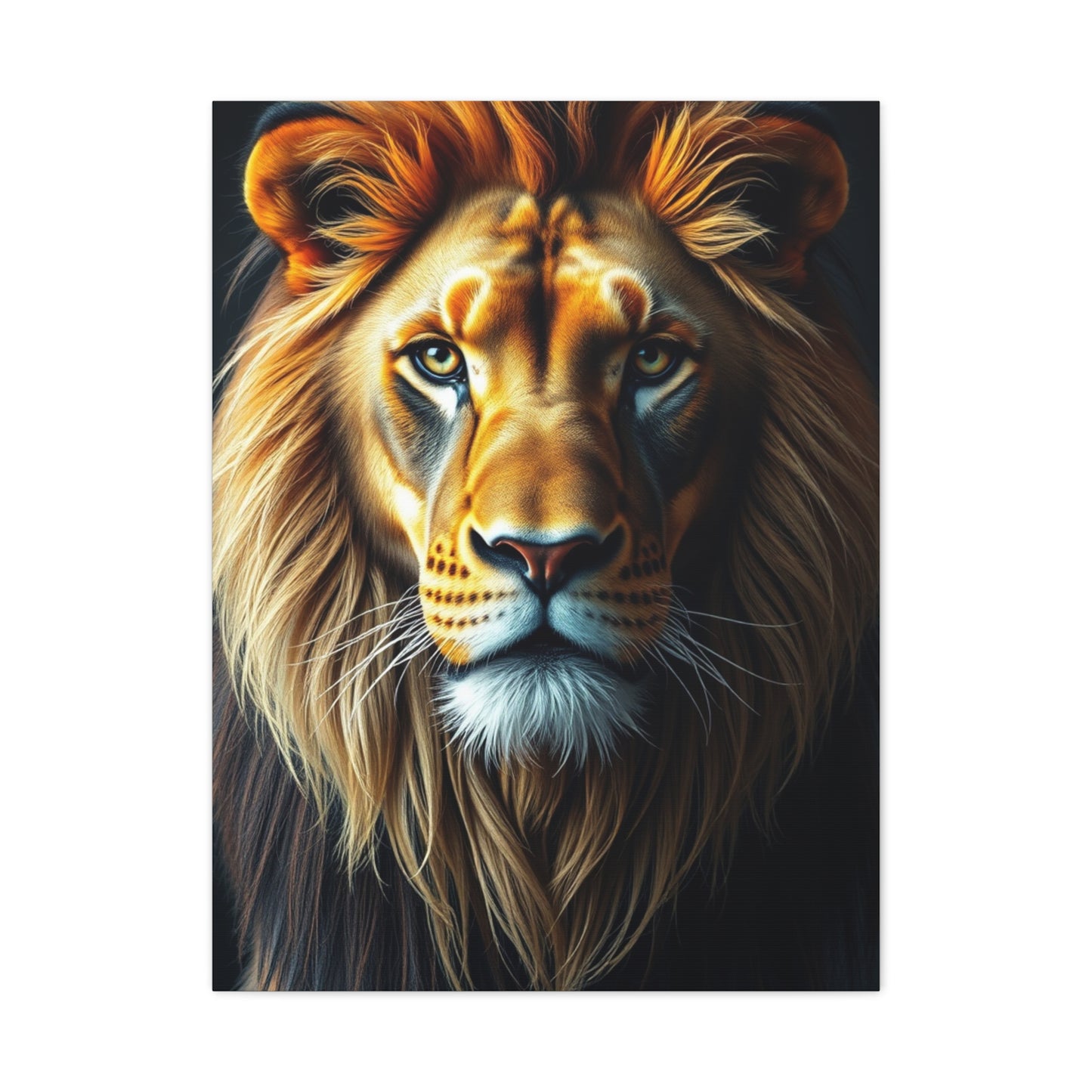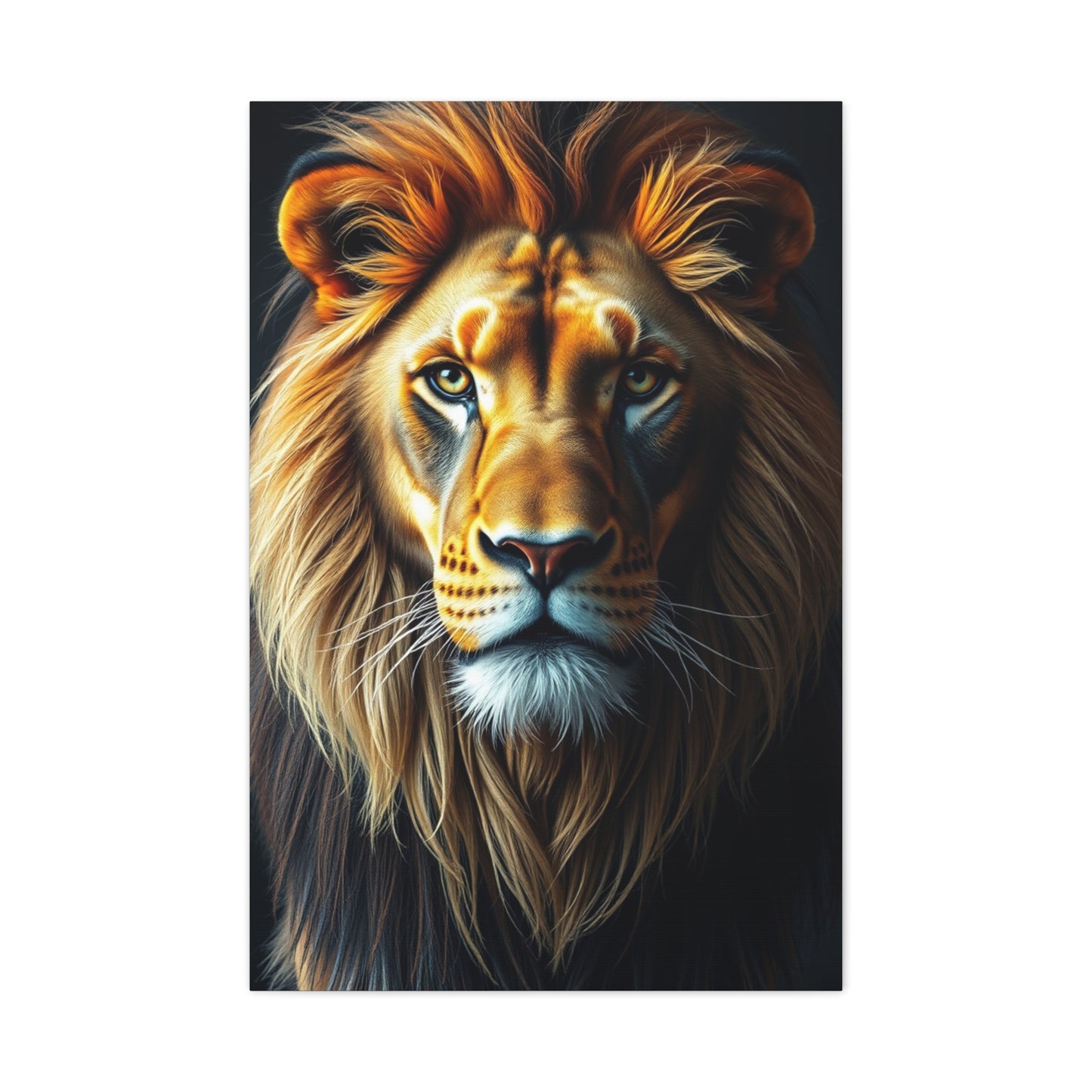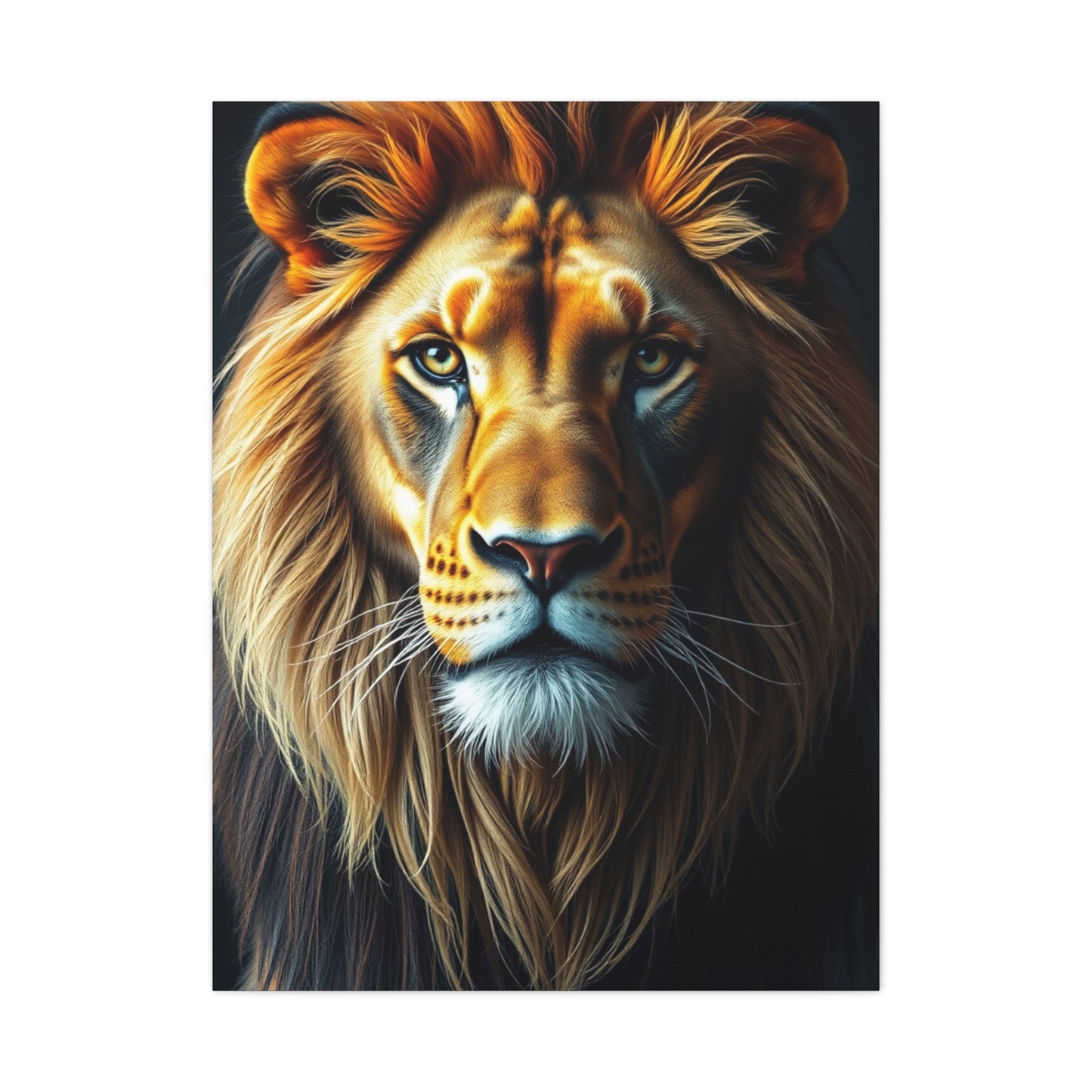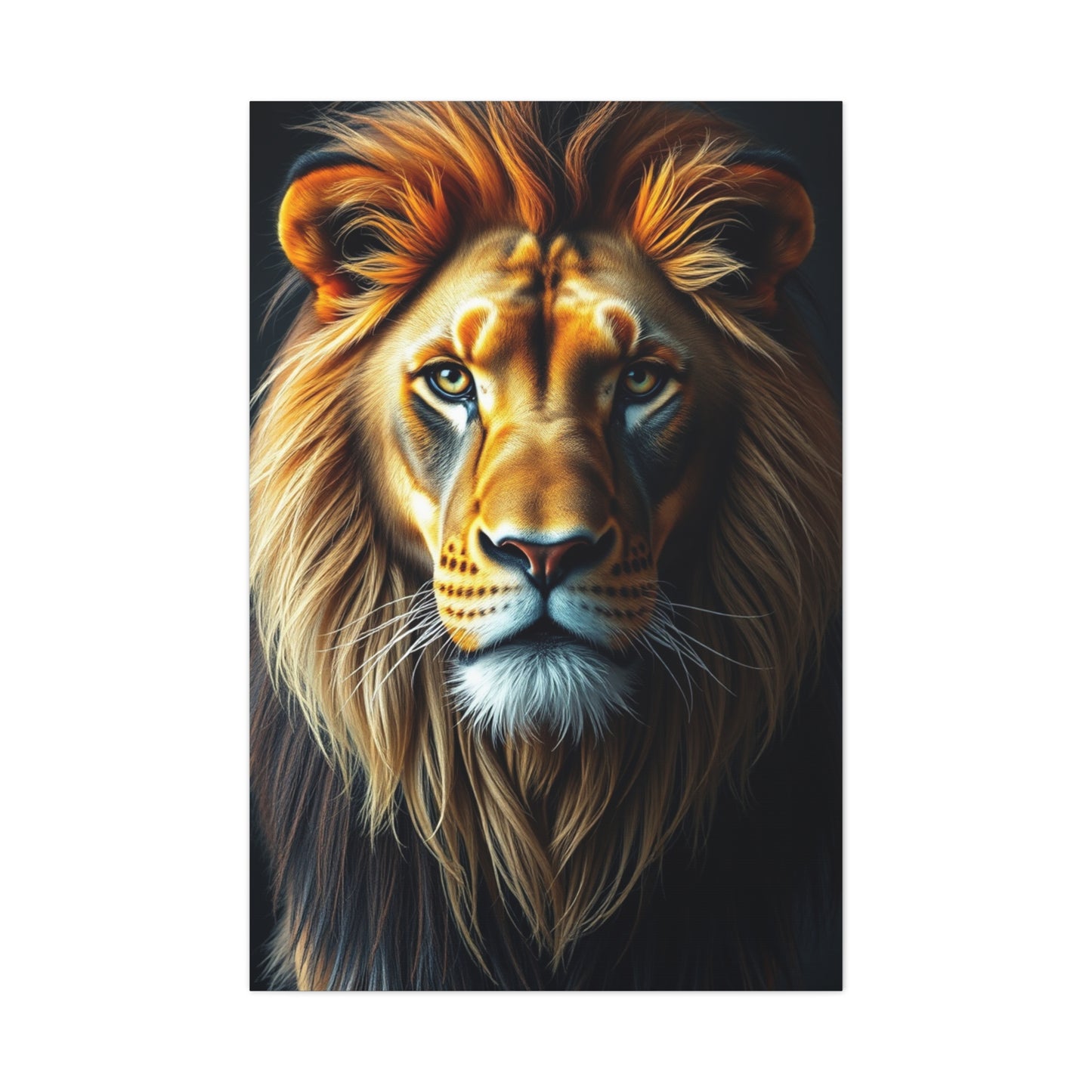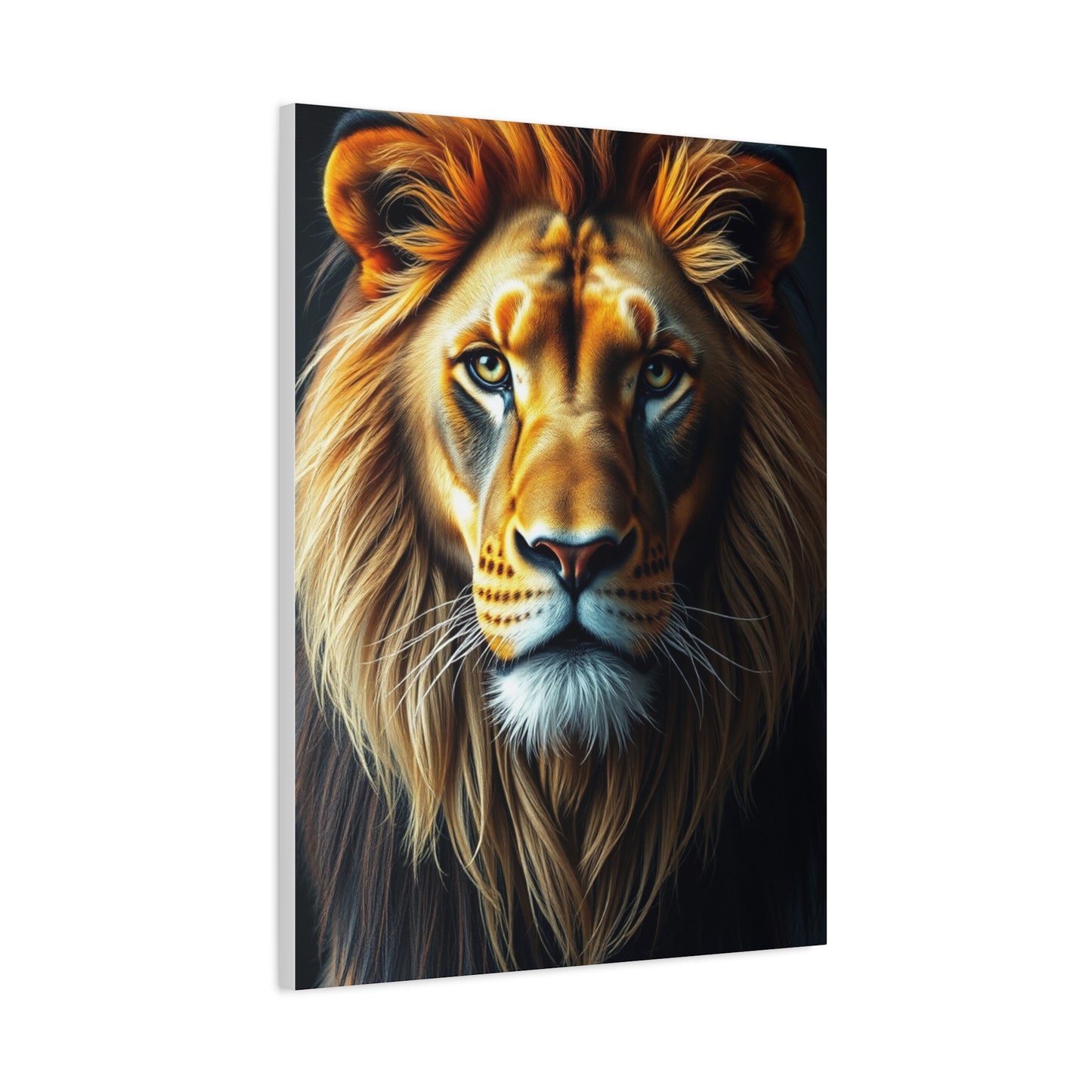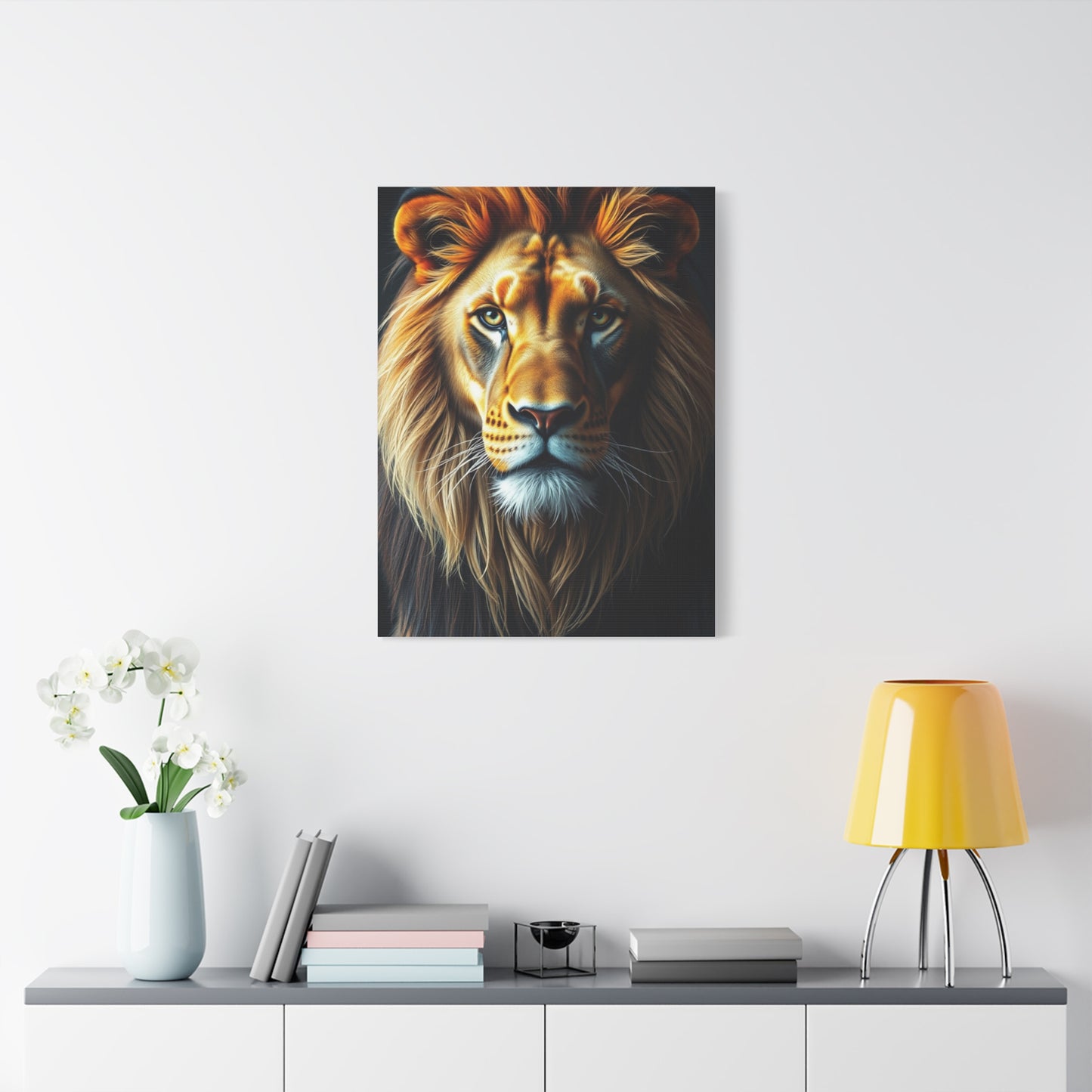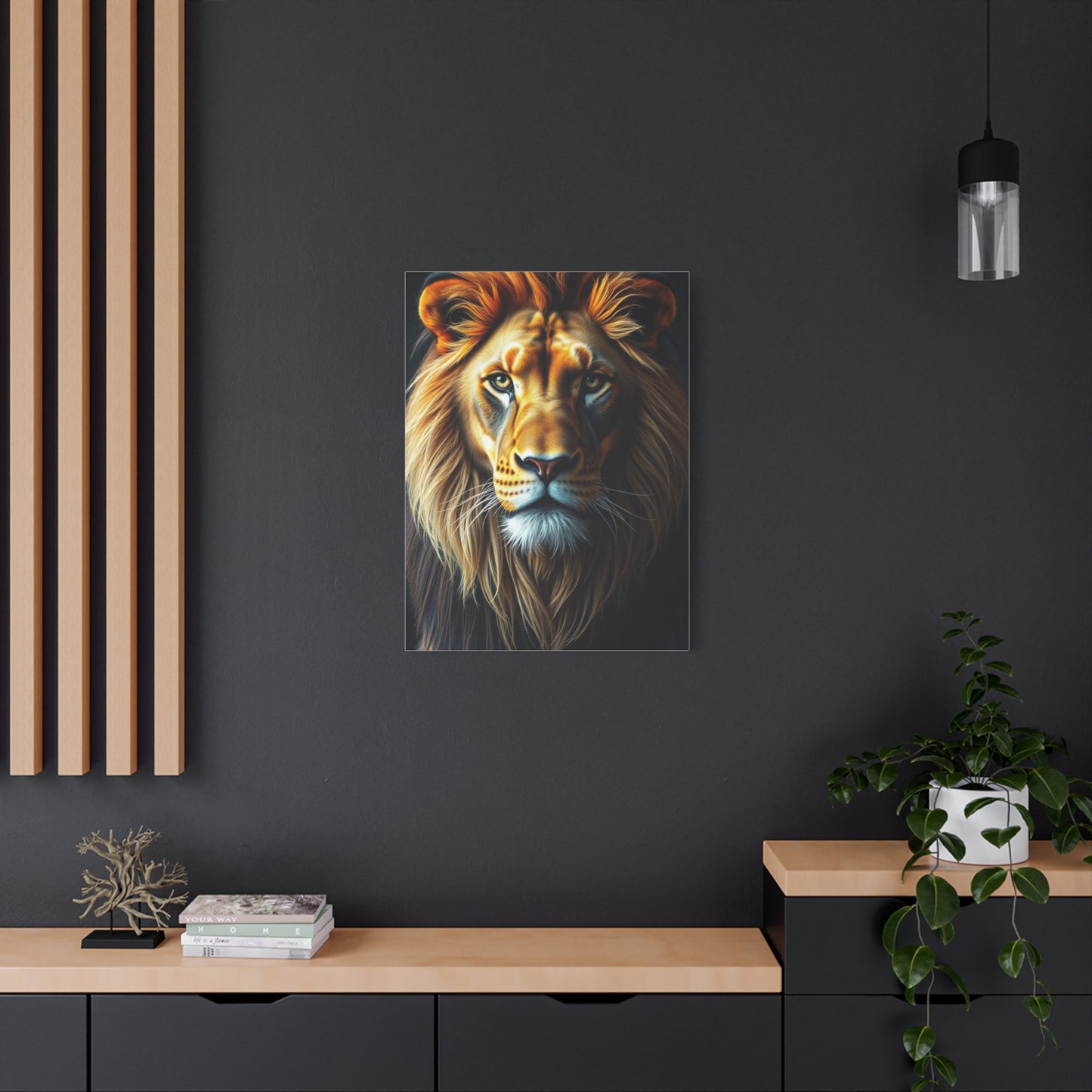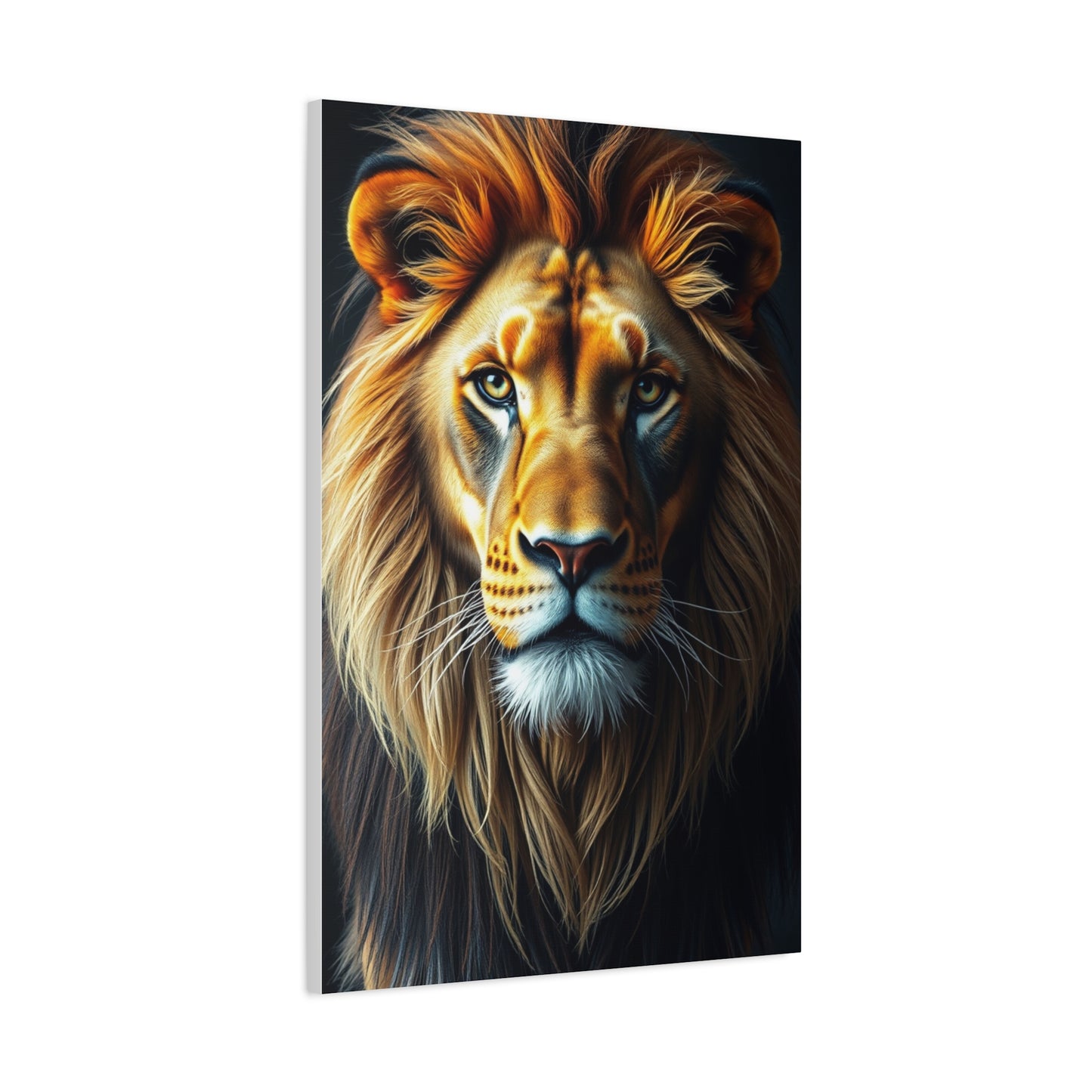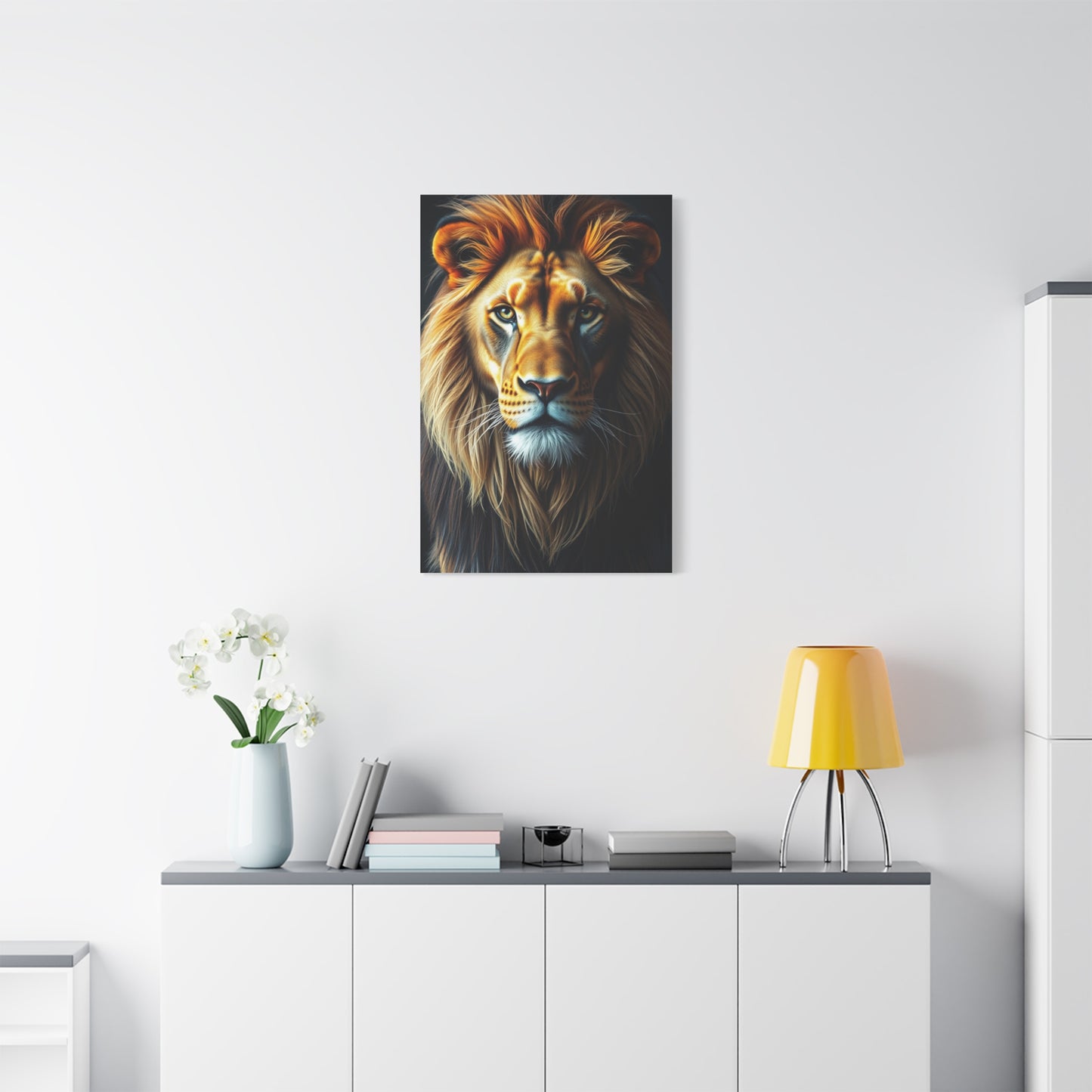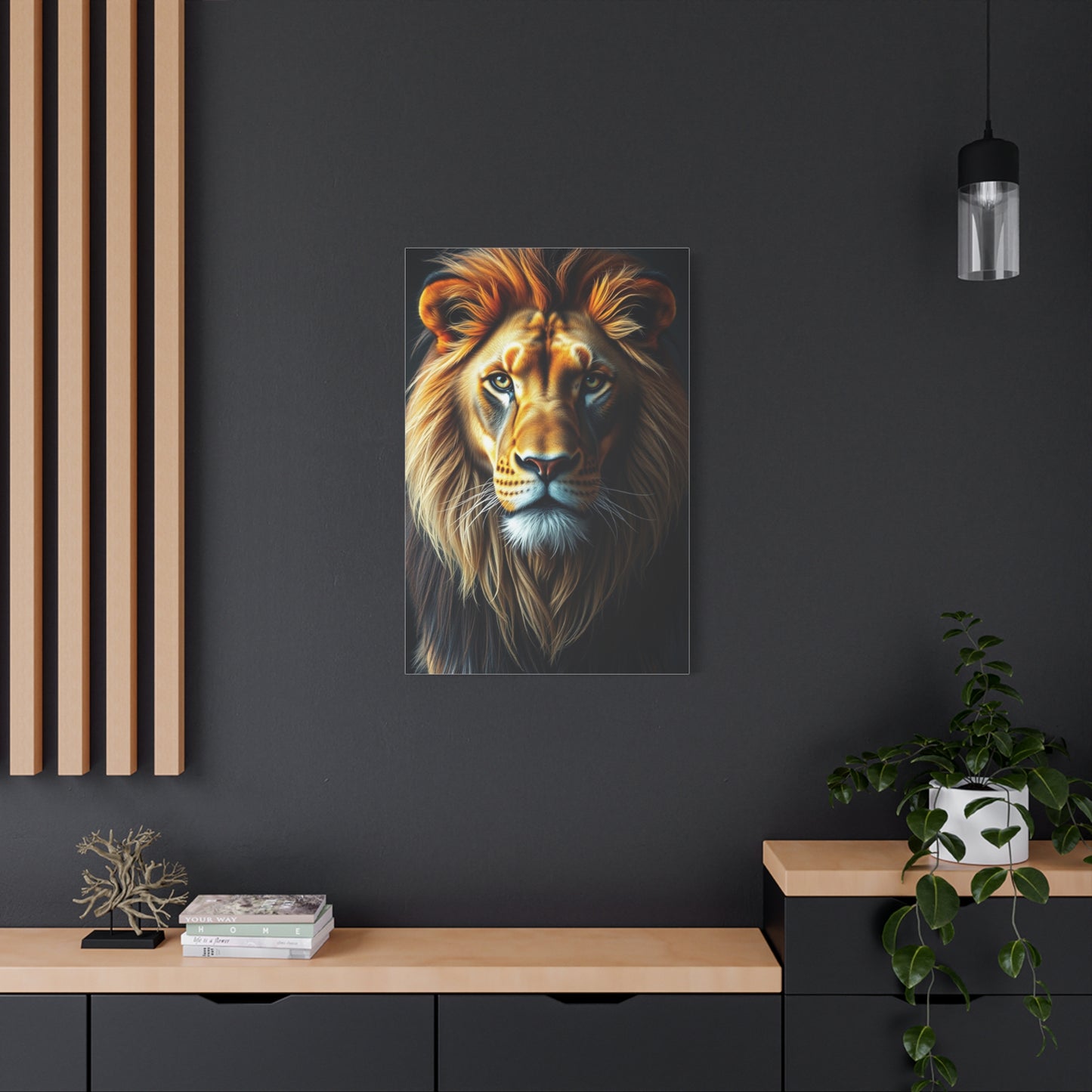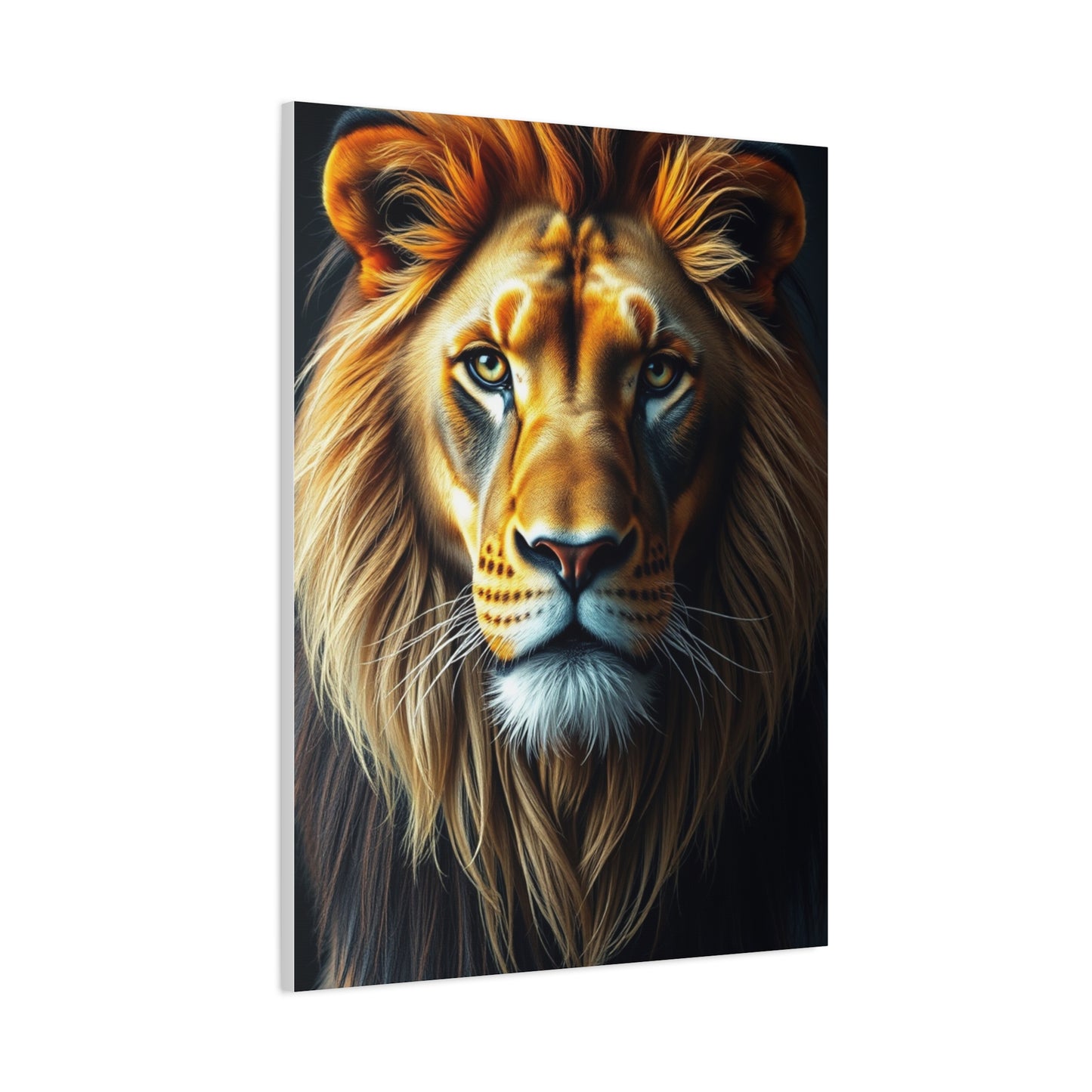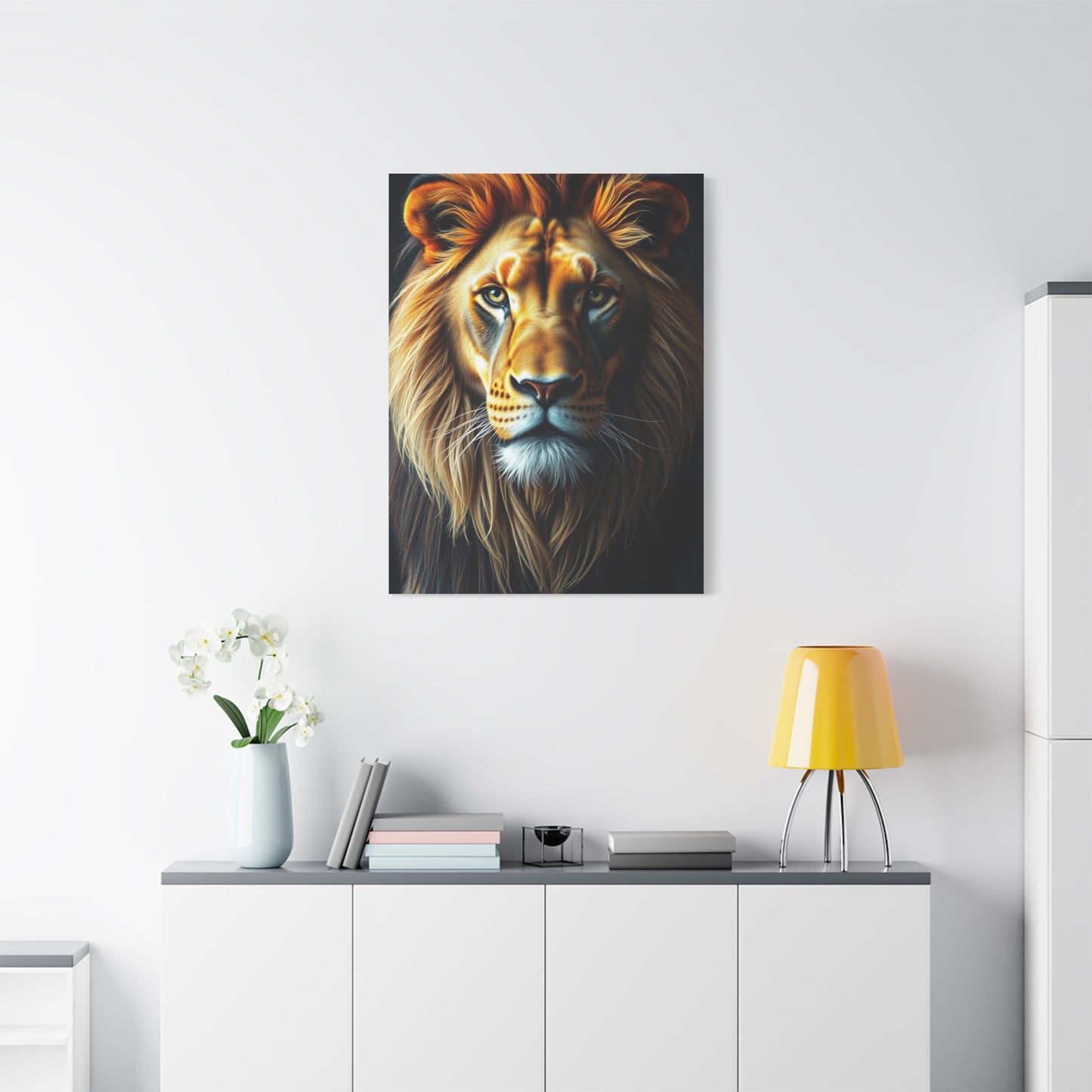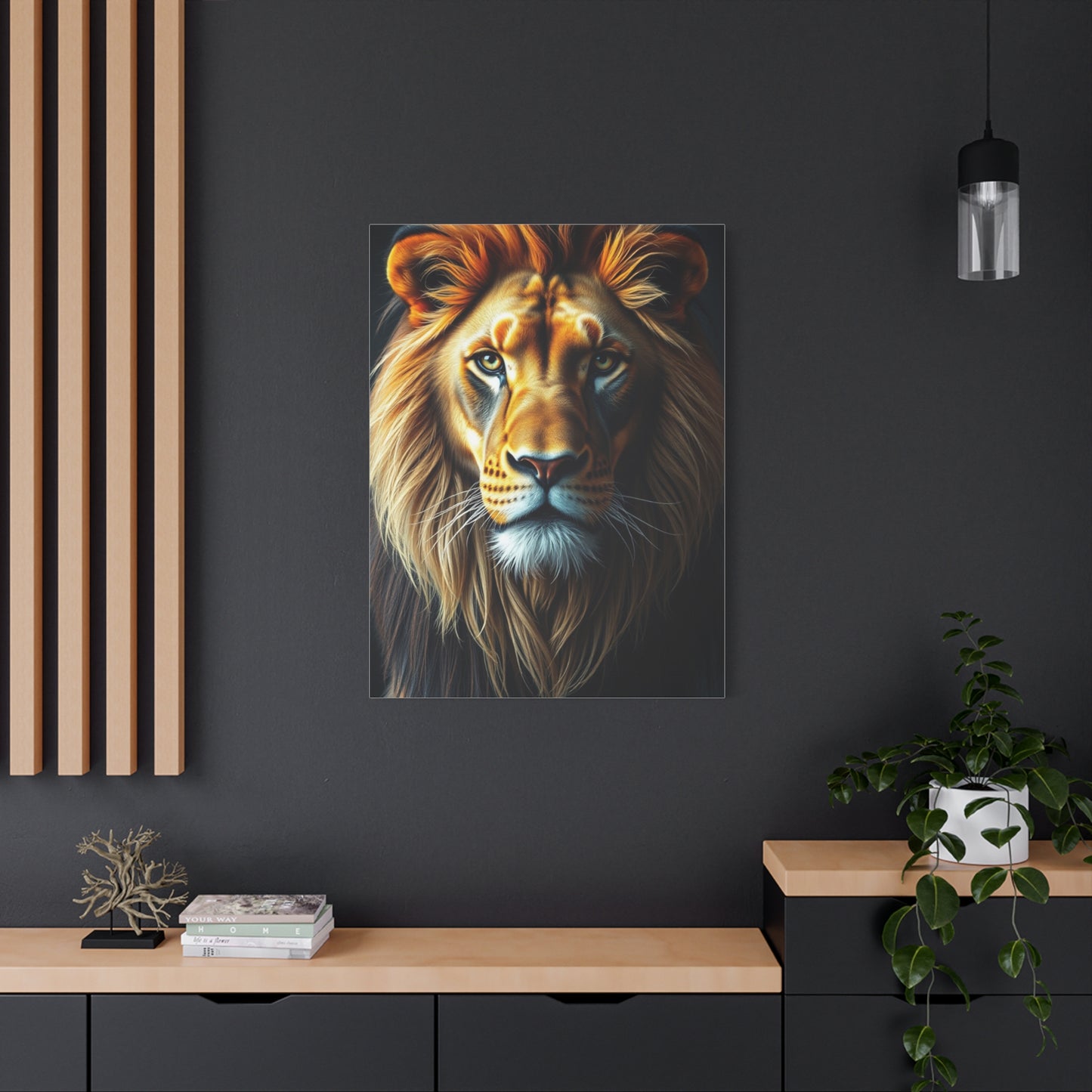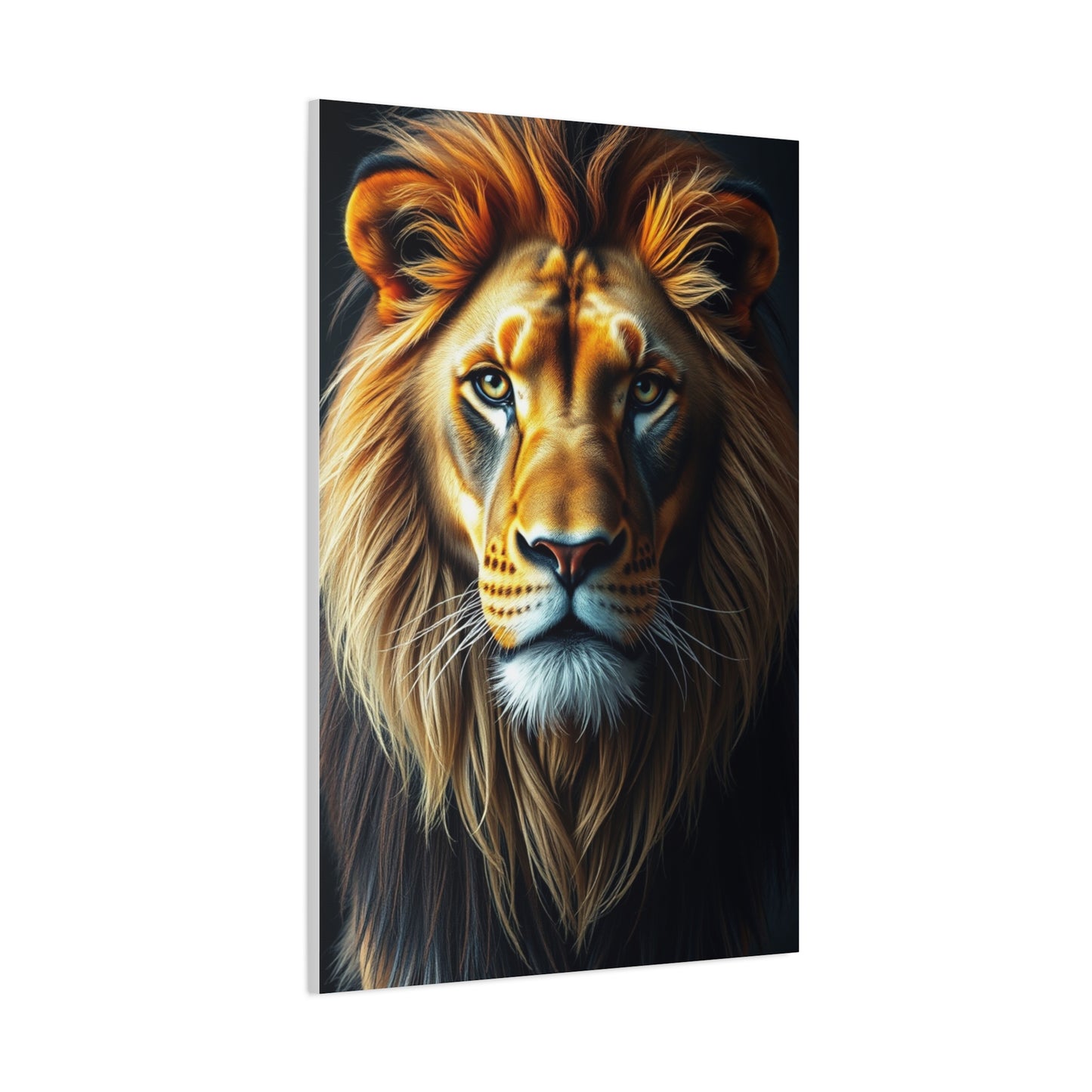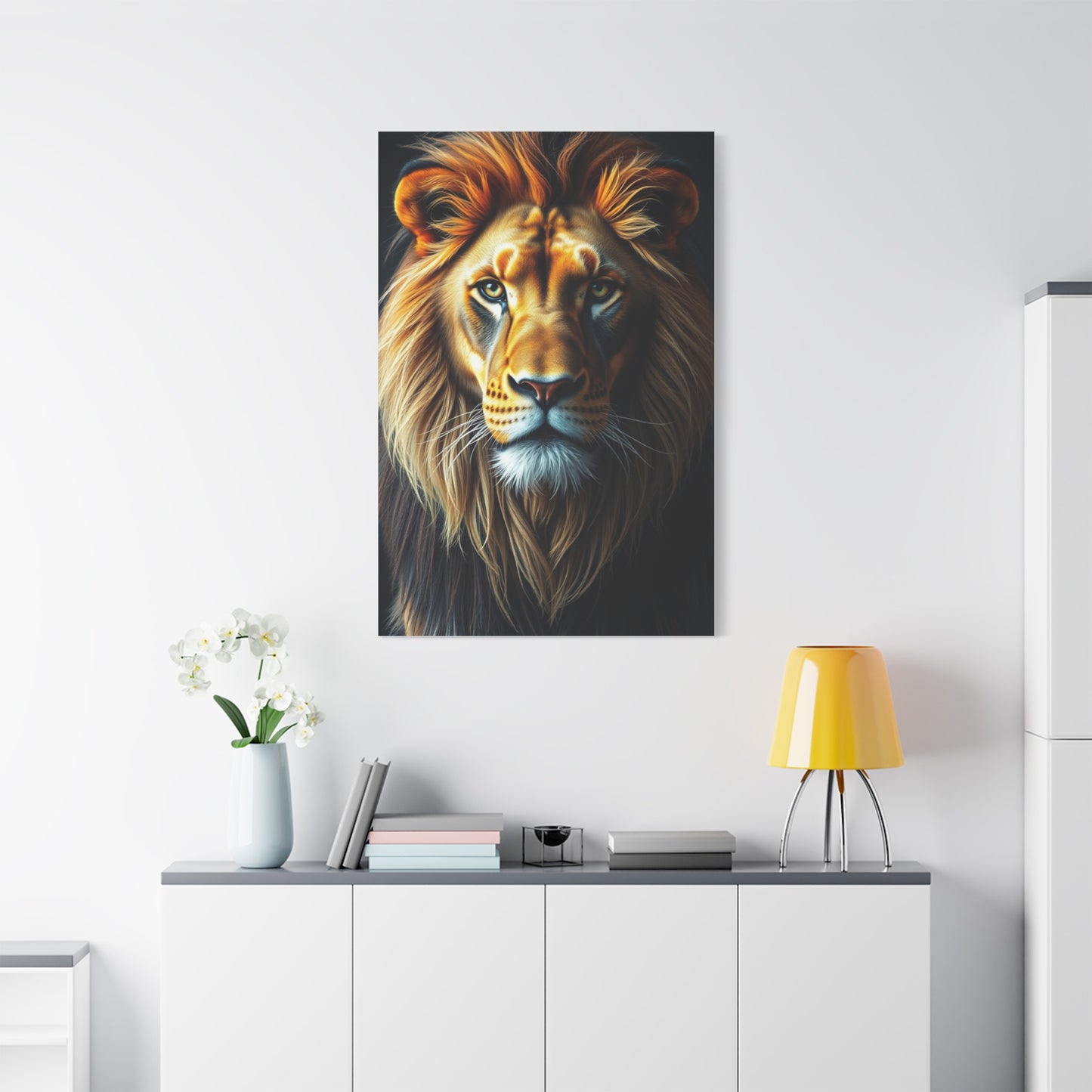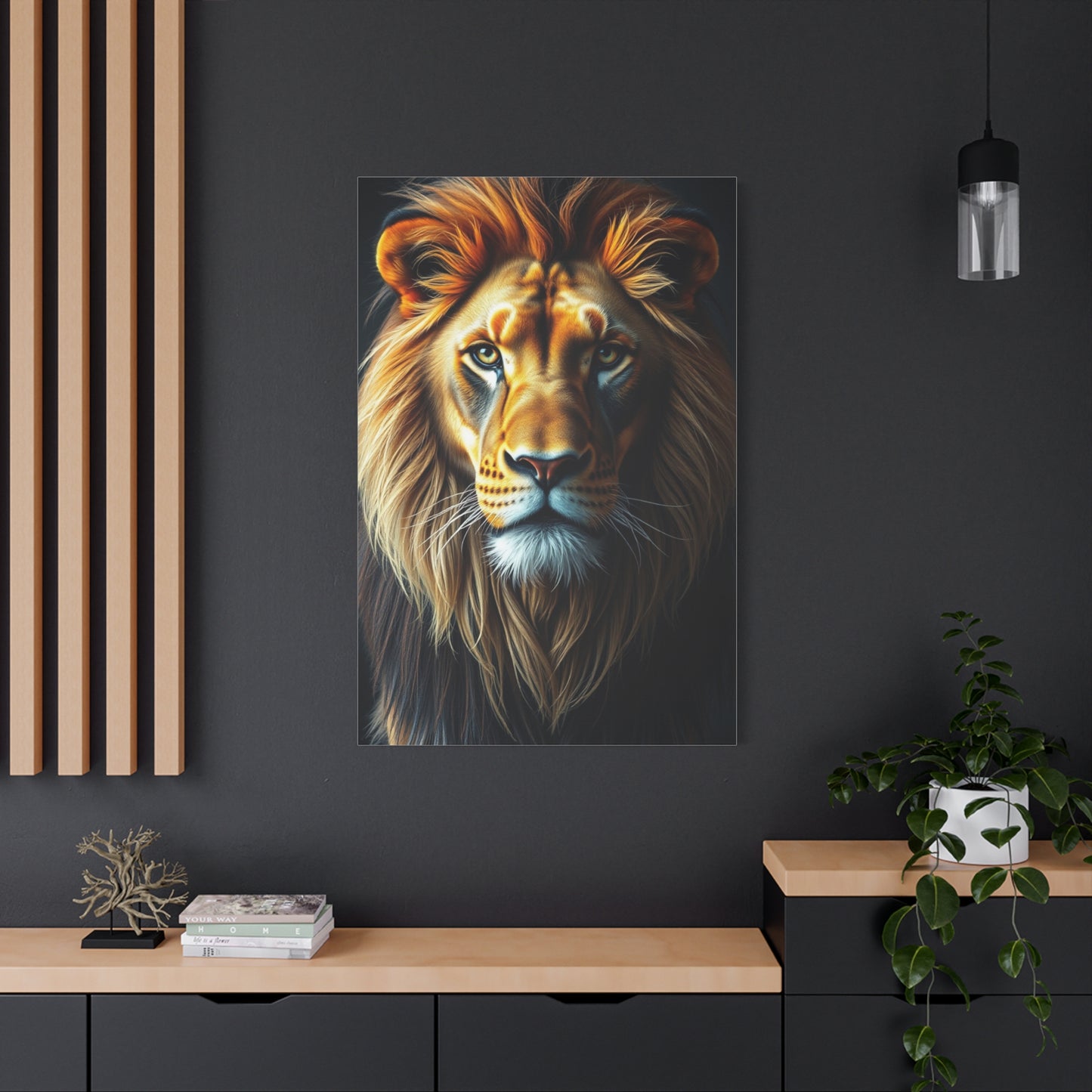Styling Your Home with 'Regal Empress of the Savannah Wall art: A Complete Guide
The magnificence of the African savannah has captivated humanity for centuries, with its vast landscapes and majestic creatures representing the pinnacle of natural beauty and power. Among the most striking subjects for contemporary home decoration are the regal empress captured on canvas, showcasing the noble bearing and graceful strength of Africa's most iconic wildlife. These powerful artistic representations transform any living environment into a sophisticated sanctuary that celebrates the untamed elegance of nature's most commanding presence.
The appeal of savannah queen wall art extends far beyond mere decoration, serving as a profound connection to the raw beauty and primal power that defines the African wilderness. Each piece tells a story of survival, dominance, and natural hierarchy that resonates with viewers on a deeply emotional level. The artistic interpretation of these magnificent creatures allows homeowners to bring a piece of the wild kingdom into their personal environments, creating focal points that command attention and inspire awe.
Contemporary artists have mastered the art of capturing the essence of these powerful creatures, translating their natural majesty into stunning visual narratives that speak to our fascination with the untamed world. The intricate details, from the piercing gaze to the subtle play of light across golden fur, create an immersive experience that transports viewers directly to the heart of the African continent. These artistic representations serve as windows into a world where power and grace coexist in perfect harmony.
The emotional impact of powerful empress in wildlife art cannot be overstated, as these pieces evoke feelings of strength, courage, and natural nobility that inspire and motivate viewers in their daily lives. The psychological benefits of surrounding oneself with images of powerful, confident creatures have been well-documented, contributing to increased feelings of personal empowerment and connection to the natural world. This transformative quality makes such artwork invaluable additions to any home environment seeking to cultivate an atmosphere of strength and sophistication.
The Artistic Evolution of Wildlife Royalty Portraits
The tradition of depicting majestic wildlife in art spans millennia, evolving from ancient cave paintings to sophisticated contemporary masterpieces that capture every nuance of animal behavior and emotion. Early civilizations recognized the symbolic power of these magnificent creatures, incorporating their images into religious ceremonies, royal insignia, and cultural celebrations. This historical foundation has laid the groundwork for modern interpretations that continue to honor the sacred relationship between humans and the natural world.
Renaissance masters pioneered techniques for realistic animal portraiture, developing methods for capturing the subtle interplay of light and shadow that brings wildlife subjects to life on canvas. These classical approaches emphasized anatomical accuracy and emotional depth, creating works that transcended mere representation to become profound artistic statements about the nature of power and beauty. The influence of these historical masterpieces continues to inform contemporary wildlife art, providing a rich foundation for modern interpretations.
The advent of photography in the 19th century revolutionized wildlife art, providing artists with unprecedented access to detailed references and behavioral insights that enhanced the authenticity of their work. This technological advancement allowed for more accurate depictions of animal anatomy, movement, and habitat, resulting in artwork that achieved new levels of realism and emotional resonance. The combination of photographic reference and artistic interpretation created a new standard for wildlife portraiture that emphasized both scientific accuracy and aesthetic beauty.
Modern digital techniques have further expanded the possibilities for wildlife art creation, enabling artists to experiment with color, texture, and composition in ways previously impossible. Digital manipulation tools allow for the enhancement of natural beauty while maintaining the essential character and spirit of the subject. This technological evolution has democratized the creation of high-quality wildlife art, making it possible for more artists to contribute to this rich tradition while maintaining the highest standards of artistic excellence.
The contemporary movement toward elegant savannah empress prints reflects a growing appreciation for the sophisticated beauty of African wildlife, moving beyond traditional hunting trophies to celebrate the living majesty of these incredible creatures. This shift represents a broader cultural transformation in our relationship with wildlife, emphasizing conservation, respect, and admiration rather than dominance and exploitation. The resulting artwork captures not only the physical beauty of these animals but also their essential dignity and worth.
Psychological Impact of Regal Wildlife Imagery
The presence of regal wildlife royalty on canvas in residential and commercial environments has been shown to produce measurable psychological benefits, including reduced stress levels, increased feelings of empowerment, and enhanced creativity. Scientific studies have demonstrated that exposure to images of powerful, confident animals can trigger positive emotional responses that contribute to overall well-being and mental health. These effects are particularly pronounced when the artwork is displayed in prominent locations where it can be regularly observed and contemplated.
The concept of biophilia, our innate affinity for the natural world, helps explain the profound impact of wildlife art on human psychology and behavior. When we surround ourselves with images of magnificent creatures in their natural habitat, we tap into deep evolutionary connections that promote feelings of harmony and balance. This connection to nature through art serves as a powerful antidote to the stress and disconnection of modern urban living, providing a daily reminder of our place in the larger natural order.
Color psychology plays a crucial role in the effectiveness of wildlife art, with the warm earth tones and golden hues typical of savannah scenes promoting feelings of comfort, security, and grounding. The rich browns, ambers, and ochres found in empress of the wild, refined art create an atmosphere of warmth and sophistication that enhances the overall ambiance of any room. These natural color palettes have been shown to reduce anxiety and promote relaxation, making them ideal choices for residential and office environments.
The symbolism inherent in images of powerful female animals resonates particularly strongly with contemporary audiences, reflecting changing attitudes toward gender roles and female empowerment. The empress archetype represents strength, wisdom, and nurturing leadership, qualities that many people aspire to embody in their personal and professional lives. This symbolic connection adds layers of meaning to the artwork that extend far beyond mere aesthetic appreciation.
Research in environmental psychology has confirmed that the presence of nature-themed artwork can significantly improve cognitive function, creativity, and problem-solving abilities. The complex visual patterns and natural forms found in wildlife art stimulate the brain in ways that promote mental agility and innovative thinking. This cognitive enhancement makes wildlife art particularly valuable in work environments where creativity and strategic thinking are essential for success.
Canvas Techniques and Material Considerations
The creation of exceptional savannah's regal queen on canvas requires mastery of various artistic techniques and careful selection of materials that will preserve the integrity and beauty of the work for generations. Professional artists typically employ multiple layers of paint to achieve the depth and richness necessary to capture the complexity of animal fur, the subtlety of light on skin, and the atmospheric quality of the African landscape. This layered approach allows for the gradual building of color intensity and textural detail that brings the subject to life.
Canvas preparation plays a crucial role in the longevity and appearance of the finished artwork, with proper priming and tension ensuring that the painting surface remains stable and receptive to paint application. High-quality linen or cotton canvas provides the ideal foundation for detailed wildlife paintings, offering the texture and absorbency necessary for professional-grade results. The choice of canvas weave can significantly impact the final appearance of the work, with finer weaves allowing for more detailed rendering and coarser weaves adding texture and visual interest.
Pigment selection and paint quality are critical factors in creating artwork that will maintain its vibrancy and color accuracy over time. Professional-grade acrylic and oil paints contain higher concentrations of pure pigment and superior binding agents that resist fading and color shift. The use of lightfast pigments ensures that the rich golds, deep browns, and subtle grays characteristic of savannah wildlife will retain their beauty for decades when properly displayed and maintained.
The application of protective varnishes and UV-resistant coatings helps preserve the artwork while enhancing color saturation and providing protection against environmental factors such as humidity, temperature fluctuation, and light exposure. These protective measures are particularly important for artwork displayed in areas with high light exposure or variable environmental conditions. Professional conservation techniques can significantly extend the lifespan of valuable wildlife art while maintaining its original beauty and impact.
Framing considerations for wildlife art must balance protection with presentation, selecting materials and styles that complement the artwork while providing adequate protection from environmental hazards. Museum-quality matting and mounting techniques ensure that the artwork remains flat and properly supported, preventing warping, cockling, or other forms of damage that can occur over time. The choice of frame style and color should enhance rather than compete with the artwork, creating a harmonious presentation that draws attention to the subject rather than the mounting.
Noble Empress of the Savannah Symbolism
The noble empress of the savannah represents far more than a mere animal portrait, embodying complex layers of meaning that speak to human aspirations, cultural values, and spiritual connections to the natural world. The empress archetype has appeared throughout human history in various forms, representing the divine feminine principle of creation, nurturing, and wise leadership. When applied to wildlife subjects, this symbolism takes on additional dimensions related to environmental stewardship, conservation ethics, and our responsibility to protect the natural world.
The concept of natural royalty challenges traditional notions of hierarchy and power, suggesting that true nobility comes not from human institutions but from the inherent dignity and wisdom found in nature. The empress figure embodies this natural aristocracy, demonstrating how strength and gentleness can coexist, how power can be exercised with restraint and wisdom. This symbolic framework provides viewers with powerful role models for leadership and personal development that transcend human social constructs.
Cultural interpretations of the empress symbol vary across different societies and traditions, but common themes include protection, fertility, wisdom, and the connection between earthly and spiritual realms. In many African traditions, powerful female animals are revered as guardians and guides, representing the protective spirit that watches over communities and ensures their survival and prosperity. These cultural associations add depth and meaning to contemporary artistic interpretations of wildlife subjects.
The psychological archetype of the empress, as defined in depth psychology and mythology, represents the fully realized feminine principle that encompasses both creative and destructive powers. This duality is clearly visible in wildlife subjects that must nurture their young while defending them against threats, demonstrating the complex balance of tenderness and ferocity that defines successful survival in the natural world. This psychological complexity makes empress imagery particularly compelling and meaningful for contemporary audiences.
The environmental symbolism inherent in empress imagery speaks to current concerns about conservation, habitat preservation, and the need to protect endangered species and their ecosystems. The empress serves as an ambassador for her species and habitat, representing not just individual beauty and power but the entire ecosystem that supports such magnificent life. This environmental dimension adds urgency and relevance to the artistic appreciation of wildlife subjects.
Grace and Power in Visual Composition
The artistic challenge of capturing grace and power in wall art requires sophisticated understanding of visual composition, color theory, and the psychological impact of different design elements. The most effective wildlife portraits achieve a delicate balance between strength and elegance, avoiding the extremes of either aggressive dominance or passive beauty. This balance is achieved through careful attention to pose, expression, lighting, and compositional elements that work together to create a unified emotional impact.
The concept of dynamic symmetry in composition helps artists create visually compelling arrangements that draw the viewer's eye through the image in a natural, pleasing manner. The placement of the subject within the frame, the direction of the gaze, and the arrangement of secondary elements all contribute to the overall flow and energy of the composition. Master artists use these principles intuitively, creating works that feel perfectly balanced and harmonious while maintaining visual interest and emotional impact.
Color relationships play a crucial role in conveying both grace and power, with warm earth tones suggesting strength and stability while cooler accent colors add sophistication and refinement. The interplay between light and shadow creates depth and dimensionality that brings the subject to life, while subtle color variations add richness and complexity to the overall image. The most successful wildlife art employs a limited but carefully chosen color palette that enhances rather than overwhelms the subject.
The treatment of background elements requires careful consideration to ensure that they support rather than compete with the main subject. Simplified, atmospheric backgrounds allow the viewer to focus on the primary subject while providing context and environmental information. The level of detail in background elements should be inversely related to their distance from the main focal point, creating a natural sense of depth and hierarchy within the composition.
Texture and surface quality add another layer of visual interest and realism to wildlife portraits, with different techniques used to render fur, skin, eyes, and environmental elements. The contrast between smooth and rough textures, sharp and soft edges, creates visual variety that keeps the viewer engaged while contributing to the overall sense of realism and presence. Master artists develop signature techniques for rendering these various surface qualities that become part of their distinctive artistic style.
Wildlife Empress in Contemporary Print Making
The evolution of wildlife empress in elegant prints has been significantly influenced by advances in digital printing technology, which have made high-quality reproductions more accessible while maintaining the integrity and beauty of the original artwork. Modern printing techniques can capture subtle color variations, fine detail, and textural qualities that were previously impossible to reproduce in mass-produced prints. This technological advancement has democratized access to museum-quality wildlife art while maintaining the artistic integrity of the original works.
Giclee printing represents the current gold standard for fine art reproduction, utilizing archival inks and museum-quality papers to create prints that rival the color accuracy and longevity of original paintings. This process employs microscopic droplets of ink applied in precise patterns that can reproduce the subtle gradations and complex color relationships found in professional wildlife art. The resulting prints maintain their beauty and color accuracy for decades when properly displayed and cared for.
The selection of printing substrates plays a crucial role in the final appearance and longevity of wildlife prints, with different papers and canvas materials offering unique aesthetic qualities and archival characteristics. Watercolor papers provide texture and absorbency that enhance the organic feel of wildlife subjects, while smooth fine art papers allow for maximum detail reproduction and color accuracy. Canvas substrates offer the look and feel of original paintings while providing durability and resistance to environmental factors.
Limited edition printing practices help maintain the exclusivity and value of fine wildlife art while making it more accessible to a broader audience than original paintings. Numbered and signed editions provide collectors with assurance of authenticity and rarity while supporting artists in their ongoing creative endeavors. The careful management of edition sizes and printing quality helps maintain the artistic and monetary value of these works over time.
The integration of traditional artistic techniques with modern printing technology has created new possibilities for wildlife art that combines the best of both worlds. Artists can now create original works using traditional media and then enhance or modify them using digital techniques before producing high-quality prints. This hybrid approach allows for greater creative flexibility while maintaining the authentic feel and emotional impact of traditional wildlife art.
Regal Savannah Scenes and Environmental Context
The creation of authentic regal savannah scenes on canvas requires deep understanding of African ecosystems, wildlife behavior, and the environmental factors that shape life on the continent. Successful wildlife art must accurately represent not only the physical appearance of animals but also their relationship to their habitat and the complex ecological web that supports their existence. This environmental authenticity adds credibility and depth to the artwork while educating viewers about the realities of wildlife conservation and habitat preservation.
The savannah ecosystem represents one of Earth's most dynamic and challenging environments, where survival depends on the ability to adapt to seasonal changes, predator-prey relationships, and competition for limited resources. Artists who specialize in savannah scenes must understand these ecological relationships to create authentic representations that capture the essence of life in this remarkable environment. The interplay between animals and their habitat provides rich source material for compelling artistic compositions.
Seasonal variations in the savannah create dramatically different moods and visual opportunities for wildlife artists, from the lush green abundance of the rainy season to the golden, drought-stressed landscapes of the dry months. These seasonal changes affect not only the appearance of the landscape but also animal behavior, migration patterns, and survival strategies. Artists who incorporate these seasonal variations into their work create more dynamic and engaging compositions that tell complete stories about life in the wild.
The role of light in savannah landscapes cannot be overstated, with the quality and direction of African sunlight creating unique atmospheric conditions that define the visual character of the region. The warm, golden light of dawn and dusk provides ideal conditions for wildlife photography and painting, creating dramatic contrasts and rich color palettes that have become synonymous with African wildlife art. Understanding and utilizing these lighting conditions is essential for creating authentic and emotionally compelling savannah scenes.
Water sources serve as focal points for much wildlife activity in savannah environments, creating natural gathering places where diverse species interact and compete for this precious resource. Rivers, watering holes, and seasonal wetlands provide artists with opportunities to create complex compositions featuring multiple species and dramatic interactions. These water-centered scenes often capture some of the most dynamic and emotionally charged moments in wildlife behavior.
Empress-Inspired Artistic Movements and Styles
The development of empress-inspired majestic wall art has been influenced by various artistic movements and cultural trends that have shaped our understanding and appreciation of wildlife subjects. The Romantic movement of the 19th century elevated nature and wildlife to subjects worthy of serious artistic attention, moving beyond mere scientific illustration to embrace the emotional and spiritual dimensions of human-animal relationships. This romantic sensibility continues to influence contemporary wildlife art that seeks to capture not just physical accuracy but emotional truth and spiritual connection.
Impressionist techniques have found natural application in wildlife art, where the focus on light, atmosphere, and emotional impression rather than precise detail can create powerful and evocative animal portraits. The impressionist emphasis on capturing fleeting moments and changing light conditions aligns perfectly with the dynamic nature of wildlife subjects, where movement, behavior, and environmental conditions are constantly shifting. This artistic approach can create more emotionally resonant works that connect with viewers on an intuitive level.
The influence of Art Nouveau can be seen in wildlife art that emphasizes flowing lines, organic forms, and the integration of subject and environment into unified decorative schemes. This artistic movement's celebration of natural forms and its rejection of artificial boundaries between fine and decorative arts has helped elevate wildlife art to its current status as a legitimate and valued artistic genre. The Art Nouveau influence can be particularly effective in creating stylized wildlife portraits that function as both fine art and decorative elements.
Contemporary abstract expressionist techniques have been applied to wildlife subjects to create works that capture the essence and energy of animals rather than their literal appearance. These abstract approaches can communicate the power, grace, and wildness of subjects in ways that representational art cannot achieve, appealing to viewers who prefer more interpretive and emotionally direct artistic experiences. The combination of recognizable wildlife forms with abstract techniques creates unique hybrid works that bridge traditional and contemporary artistic sensibilities.
The photorealistic movement has pushed wildlife art toward unprecedented levels of technical precision and detail, creating works that rival photography in their accuracy while maintaining the interpretive and emotional qualities that distinguish painting from mechanical reproduction. This hyperrealistic approach requires extraordinary technical skill and patience but can produce works of stunning beauty and impact that command attention and respect in any environment. The challenge for photorealistic wildlife artists is to maintain emotional engagement while achieving technical excellence.
The Savannah's Royal Presence in Contemporary Culture
The concept of the savannah's royal presence has permeated contemporary culture far beyond the realm of fine art, influencing fashion, literature, film, and popular media in ways that reflect our ongoing fascination with African wildlife and landscapes. This cultural presence speaks to deep human needs for connection with nature, adventure, and the exotic, while also reflecting growing awareness of conservation issues and environmental responsibility. The empress archetype serves as a powerful symbol that can carry multiple layers of meaning and emotional resonance.
Fashion designers have drawn extensively from African wildlife imagery, incorporating animal prints, earth tone color palettes, and natural textures into clothing and accessories that evoke the power and beauty of savannah landscapes. The enduring popularity of leopard prints, zebra patterns, and other wildlife-inspired designs demonstrates the continuing appeal of these natural forms in contemporary aesthetics. The association between wildlife imagery and luxury brands reflects the status and sophistication that these natural symbols continue to convey.
Literature and film have long utilized African wildlife settings as backdrops for stories of adventure, self-discovery, and environmental consciousness, with the empress figure often serving as a symbol of wisdom, power, and natural harmony. These narrative applications help reinforce the cultural significance of wildlife imagery while introducing new generations to the beauty and importance of African ecosystems. The continuing popularity of wildlife-themed entertainment reflects ongoing public interest in these subjects and their symbolic meanings.
The influence of social media and digital communication has created new platforms for sharing and appreciating wildlife art, with online galleries, virtual exhibitions, and digital collections making these works more accessible to global audiences. This digital presence has also created new opportunities for artists to connect with collectors and enthusiasts while building communities around shared appreciation for wildlife art. The viral nature of particularly striking wildlife images has helped elevate the profile and cultural impact of this artistic genre.
Corporate and institutional use of wildlife imagery in branding and marketing reflects the positive associations that consumers make with strength, natural beauty, and environmental responsibility. Companies that incorporate empress and wildlife themes into their visual identity tap into these powerful symbolic associations while often supporting conservation efforts and environmental initiatives. This commercial application helps fund continued artistic creation while raising awareness of conservation issues.
Canvas Art of Regal Empress Beauty Across Cultures
The appreciation of canvas art of regal empress beauty transcends cultural boundaries, with different societies bringing their own interpretations and meanings to these powerful images. African cultures, with their deep historical connections to these animals and landscapes, often view empress imagery as representations of ancestral wisdom, spiritual guidance, and cultural identity. These traditional perspectives add authenticity and depth to contemporary artistic interpretations while honoring the cultural origins of these powerful symbols.
Asian aesthetic traditions have influenced wildlife art through their emphasis on balance, harmony, and the spiritual significance of natural subjects. The incorporation of feng shui principles and traditional composition techniques can enhance the psychological and spiritual impact of empress imagery while creating works that function effectively in contemporary Asian and Asian-influenced environments. The integration of Eastern and Western artistic traditions has produced unique hybrid styles that appeal to global audiences.
European artistic traditions have contributed technical sophistication and classical composition principles to contemporary wildlife art, with centuries of experience in animal portraiture providing a rich foundation for modern interpretations. The European emphasis on technical excellence and artistic innovation continues to influence wildlife artists who seek to push the boundaries of the medium while maintaining connection to historical traditions. This classical influence helps elevate wildlife art to the level of fine art worthy of museum and gallery exhibition.
Native American perspectives on wildlife art emphasize the spiritual and totemic significance of animal subjects, viewing them as teachers, guides, and sacred beings worthy of respect and reverence. These indigenous viewpoints add spiritual dimensions to wildlife art that can enhance its meaning and impact for viewers seeking deeper connection with nature and natural wisdom. The incorporation of indigenous perspectives also raises important questions about cultural appropriation and the need for respectful representation of traditional beliefs.
Contemporary global art markets have created opportunities for wildlife artists from diverse cultural backgrounds to share their unique perspectives and techniques with international audiences. This cultural exchange has enriched the field of wildlife art while creating new markets and opportunities for artists from developing countries where much of the world's remaining wildlife resides. The globalization of wildlife art has also increased awareness of conservation issues and the need for international cooperation in protecting endangered species and habitats.
Wildlife Royalty Captured in Modern Art Techniques
The evolution of wildlife royalty captured in art has been significantly enhanced by the development of new artistic techniques and materials that allow for greater precision, durability, and creative expression. Mixed media approaches combine traditional painting techniques with collage, texture paste, and digital elements to create layered, complex works that capture multiple dimensions of the wildlife experience. These innovative techniques allow artists to incorporate environmental elements, cultural symbols, and abstract concepts that enhance the meaning and impact of their work.
Acrylic painting techniques have revolutionized wildlife art by providing artists with fast-drying, versatile media that can achieve both detailed realism and expressive abstraction within the same work. The rapid drying time of acrylics allows for layered techniques that can build complex color relationships and textural effects while maintaining the spontaneity and freshness that brings wildlife subjects to life. Advanced acrylic mediums and additives provide additional creative possibilities for achieving unique surface qualities and effects.
Oil painting remains the gold standard for detailed wildlife portraiture, with its slow drying time and blendability allowing for the subtle gradations and smooth transitions that are essential for realistic animal rendering. The traditional techniques of oil painting, refined over centuries of artistic practice, provide wildlife artists with the tools necessary to capture the most subtle details of fur texture, eye color, and skin quality. The permanence and richness of oil paints ensure that these works will maintain their beauty for generations.
Digital art techniques have opened entirely new possibilities for wildlife art creation, allowing artists to experiment with color, composition, and effect in ways that would be impossible with traditional media. Digital painting software provides tools for creating complex layered compositions, adjusting color and lighting, and incorporating photographic elements that enhance the realism and impact of the final work. The flexibility of digital techniques allows for extensive revision and experimentation without the material costs associated with traditional media.
Sculptural approaches to wildlife art create three-dimensional works that allow viewers to experience the power and presence of wildlife subjects in a more immediate and physical way. Bronze casting, stone carving, and modern synthetic materials provide sculptors with the means to create permanent, weather-resistant works that can function in both indoor and outdoor environments. The tactile quality of sculpture adds another dimension to the wildlife art experience while creating works that can serve as focal points for landscape and architectural design.
Empress of the Wild on Contemporary Wall Displays
The presentation of empress of the wild on your wall requires careful consideration of display techniques, lighting, and environmental factors that will enhance the visual impact while protecting the investment in fine art. Professional display methods ensure that artwork is properly supported, protected from environmental hazards, and positioned for optimal viewing while maintaining the flexibility to relocate or reconfigure displays as needs change. The investment in proper display techniques pays dividends in both aesthetic satisfaction and long-term preservation of valuable artwork.
Lighting design plays a crucial role in the effective display of wildlife art, with different types of lighting creating dramatically different moods and visual effects. Museum-quality LED lighting systems provide consistent, controllable illumination that enhances color accuracy while minimizing heat and UV damage to artwork. The direction, intensity, and color temperature of lighting can be adjusted to create optimal viewing conditions while protecting the artwork from harmful environmental factors.
The relationship between artwork and surrounding architectural elements must be carefully considered to create harmonious, visually pleasing displays that enhance both the art and the environment. The scale, proportion, and style of frames should complement the architectural context while providing adequate visual weight to balance the composition. Color relationships between artwork, wall treatments, and furnishings should be planned to create cohesive design schemes that support rather than compete with the artistic content.
Security considerations for valuable wildlife art include both theft prevention and environmental protection measures that ensure the long-term safety and preservation of the collection. Professional hanging systems, security fasteners, and alarm systems provide protection against theft while UV filtering glass or acrylic glazing protects against light damage and environmental contamination. Investment in proper security measures protects both the financial and sentimental value of wildlife art collections.
The psychological impact of artwork placement within residential and commercial environments has been studied extensively, with research confirming that strategic placement can enhance mood, productivity, and overall well-being. Wildlife art placed in prominent locations where it can be regularly viewed and contemplated provides ongoing psychological benefits while serving as conversation starters and focal points for social interaction. The cumulative effect of living with powerful, beautiful imagery contributes to long-term satisfaction and environmental harmony.
Bold and Elegant Savannah Print Collections
The development of bold and elegant savannah prints has created new opportunities for homeowners and collectors to incorporate high-quality wildlife art into their living and working environments without the cost and commitment required for original paintings. These print collections offer carefully curated selections of complementary works that can be displayed together to create comprehensive wildlife art installations that transform entire rooms or buildings. The availability of coordinated print series makes it possible to create professional-quality displays that rival gallery installations.
Thematic print collections allow collectors to explore specific aspects of savannah wildlife and landscape while maintaining visual coherence and artistic continuity throughout their displays. Series focusing on different species, seasonal variations, or behavioral themes provide educational value while creating visually compelling arrangements that tell complete stories about life in the African wilderness. These thematic approaches help viewers develop deeper appreciation and understanding of wildlife subjects and their environmental context.
The economics of print collecting make wildlife art more accessible to a broader audience while still providing artists with income to support their ongoing creative work. Limited edition prints maintain exclusivity and investment value while allowing multiple collectors to enjoy the same artistic vision. The careful management of edition sizes and printing quality helps ensure that print collectors can build valuable collections while supporting the artists whose work they admire.
Framing and presentation options for print collections have expanded significantly with the development of new materials and techniques that provide museum-quality results at reasonable costs. Custom matting, professional mounting, and conservation framing techniques ensure that prints will maintain their beauty and value over time while providing flexibility for future changes in display arrangements. The investment in quality framing and presentation pays dividends in both aesthetic satisfaction and long-term value preservation.
The integration of print collections into comprehensive design schemes requires understanding of color theory, spatial relationships, and visual hierarchy to create displays that enhance rather than overwhelm their environments. Professional design consultation can help collectors make optimal choices in artwork selection, framing, and placement to achieve their aesthetic and functional goals. The successful integration of wildlife art into living and working environments creates lasting satisfaction and ongoing enjoyment for collectors and viewers.
Conservation Themes in Royal Wildlife Art
The incorporation of conservation themes into royal wildlife art reflects growing awareness of environmental challenges and the need for active protection of endangered species and their habitats. Contemporary wildlife artists increasingly view themselves as conservation advocates, using their work to raise awareness of environmental issues while celebrating the beauty and importance of threatened species. This conservation focus adds urgency and relevance to wildlife art while connecting collectors and viewers with important environmental causes.
The documentation of endangered species through art serves as both celebration and memorial, capturing the essence of animals that may not survive in the wild for future generations. These artistic records become increasingly valuable as species face mounting pressure from habitat loss, climate change, and human encroachment. The emotional impact of beautiful wildlife art can motivate viewers to support conservation efforts while preserving visual records of Earth's biodiversity for posterity.
Educational applications of wildlife art help raise awareness of conservation issues while building appreciation for the natural world among people who may never have the opportunity to experience African wildlife firsthand. Museums, schools, and conservation organizations use wildlife art as educational tools that can communicate complex ecological relationships and conservation challenges in accessible, emotionally engaging ways. The combination of aesthetic beauty and educational content makes wildlife art particularly effective for conservation outreach and education.
The economic benefits of wildlife art can contribute directly to conservation efforts when artists donate portions of their proceeds to wildlife protection organizations or participate in fundraising exhibitions and events. This economic connection creates a direct link between art appreciation and conservation action while providing sustainable funding for ongoing protection efforts. The growing market for conservation-themed wildlife art reflects increasing consumer interest in supporting environmental causes through their purchasing decisions.
International cooperation in wildlife conservation is reflected in the global nature of contemporary wildlife art markets, with artists, collectors, and conservationists working together across national boundaries to protect shared natural heritage. This international perspective recognizes that wildlife conservation is a global responsibility that requires coordinated action and mutual support. The universal appeal of wildlife art helps build the international cooperation necessary for effective conservation action.
Technological Innovations in Wildlife Art Creation
The integration of technological innovations in wildlife art creation has revolutionized the field while maintaining the essential aesthetic and emotional qualities that make wildlife art compelling and meaningful. Digital photography provides artists with unprecedented access to detailed reference materials that can capture subtle aspects of animal behavior, anatomy, and environmental context that would be difficult or impossible to observe and record using traditional methods. High-resolution cameras and specialized wildlife photography techniques have created vast libraries of reference materials that support more accurate and authentic artistic interpretations.
Computer-aided design and digital painting software allow artists to experiment with composition, color, and effect in ways that were previously impossible or prohibitively expensive. These digital tools enable extensive revision and refinement of artistic concepts before committing to final execution in traditional media. The ability to create multiple variations and test different approaches digitally has improved the quality and success rate of finished wildlife art while reducing material costs and waste.
Three-dimensional modeling and virtual reality technologies are beginning to find applications in wildlife art education and creation, allowing artists and students to study animal anatomy and movement in ways that complement traditional observation and drawing techniques. These technologies can provide insights into animal structure and biomechanics that enhance the accuracy and authenticity of artistic interpretations. Virtual reality experiences can also provide immersive wildlife encounters that inspire and inform artistic creation.
Advanced printing technologies have made high-quality reproduction of wildlife art more accessible and affordable while maintaining the color accuracy and detail necessary for museum-quality results. Inkjet printing systems with expanded color gamuts and archival inks can reproduce subtle color relationships and fine details that were previously lost in reproduction. These technological advances have democratized access to high-quality wildlife art while supporting artists through expanded market opportunities.
Online platforms and social media have transformed the way wildlife art is created, shared, and sold, creating global communities of artists, collectors, and enthusiasts who can connect and collaborate regardless of geographic location. Digital galleries, virtual exhibitions, and online marketplaces have expanded opportunities for artists to reach audiences and build careers while providing collectors with access to artwork from around the world. These technological platforms have also facilitated education and awareness-building around wildlife conservation issues.
Psychological Benefits of Wildlife Royalty Art
The psychological benefits of surrounding oneself with images of wildlife royalty have been documented through extensive research in environmental psychology and therapeutic applications. The presence of powerful, graceful wildlife imagery in living and working environments has been shown to reduce stress, improve mood, and enhance cognitive function while promoting feelings of connection to the natural world. These benefits are particularly pronounced in urban environments where direct contact with nature is limited.
Biophilia research demonstrates that humans have an innate affinity for natural forms and living systems that influences our psychological and physiological responses to environmental stimuli. Wildlife art activates these biophilic responses, creating positive emotional states that contribute to overall well-being and life satisfaction. The incorporation of wildlife imagery into therapeutic environments has shown measurable improvements in patient outcomes and recovery rates.
The archetypal symbolism of powerful female animals resonates with contemporary psychological understanding of empowerment, leadership, and personal development. Empress imagery provides viewers with positive role models that embody strength, wisdom, and nurturing care while demonstrating the compatibility of power and grace. This symbolic content can support personal growth and development while reinforcing positive self-image and confidence.
Color therapy principles explain some of the psychological benefits of wildlife art, with the earth tone palettes typical of savannah scenes promoting feelings of stability, security, and grounding. The warm golds, rich browns, and soft greens found in wildlife art create atmospheres of comfort and relaxation while stimulating creativity and mental clarity. These color relationships have measurable effects on mood and cognitive function that contribute to the overall impact of wildlife art displays.
Meditation and mindfulness practices can be enhanced through contemplation of wildlife art, with the complex visual patterns and natural forms providing focal points for concentration and reflection. The practice of mindful observation of art has been shown to reduce anxiety, improve focus, and promote emotional regulation while deepening appreciation for natural beauty. Wildlife art serves as a bridge between indoor contemplative practices and outdoor nature connection.
Cultural Significance of Empress Symbolism
The cultural significance of empress symbolism extends far beyond artistic appreciation, touching deep aspects of human psychology, spirituality, and social organization that have shaped civilizations throughout history. The empress archetype represents the mature feminine principle that encompasses both creative and protective powers, serving as a symbol of wise leadership, nurturing care, and natural authority. This archetypal significance gives contemporary wildlife art additional layers of meaning that resonate with viewers on both conscious and unconscious levels.
Religious and spiritual traditions from around the world have incorporated empress symbolism into their iconography and mythology, recognizing the power of this archetype to convey complex truths about divine feminine energy and natural law. The application of this symbolism to wildlife subjects creates bridges between human spiritual traditions and the natural world, suggesting that animals can serve as teachers and guides in human spiritual development. This spiritual dimension adds depth and meaning to wildlife art that transcends mere aesthetic appreciation.
Anthropological studies of hunter-gatherer societies reveal the central role of powerful female animals in creation myths, spiritual practices, and social organization. These traditional perspectives on wildlife emphasize respect, reverence, and reciprocal relationship rather than dominance and exploitation. The incorporation of these traditional viewpoints into contemporary wildlife art honors indigenous wisdom while promoting more sustainable and respectful relationships with the natural world.
Gender studies perspectives on empress symbolism highlight the importance of powerful female role models in challenging traditional gender hierarchies and promoting more balanced and inclusive social structures. The empress archetype demonstrates that true power combines strength with wisdom, authority with compassion, and independence with nurturing care. These qualities provide positive examples for people of all genders while challenging limiting stereotypes and expectations.
Conclusion
Styling your home with the Regal Empress of the Savannah wall art offers a unique opportunity to blend the wild beauty of the African savannah with a sense of majestic elegance. This distinctive piece transcends traditional décor, transforming any room into a sanctuary that celebrates strength, grace, and nature’s grandeur. Whether you’re drawn to its commanding presence, intricate details, or rich symbolism, incorporating this artwork into your home speaks volumes about your appreciation for both art and the natural world.
One of the most compelling aspects of the Regal Empress of the Savannah wall art is its ability to serve as a focal point that immediately captures attention. The vivid imagery and powerful symbolism—often evoking the lioness or other regal savannah creatures—imbue your space with a narrative of resilience, leadership, and beauty. This makes the piece not just decorative but meaningful, offering inspiration and a daily reminder of the virtues represented by the empress figure. It’s a statement piece that transcends trends, ensuring your home reflects your personal values and aesthetic for years to come.
When styling your home around this piece, balance and harmony are key. The art’s boldness pairs beautifully with neutral tones and natural materials, such as warm woods, stone accents, and earthy textiles. These elements evoke the environment of the savannah, creating an immersive atmosphere that complements the wall art. Adding touches of gold, bronze, or other metallics can enhance the regal feel, while plants and natural fibers bring life and texture, making your space inviting and sophisticated.
The versatility of the Regal Empress of the Savannah wall art allows it to integrate seamlessly into various interior styles. In a contemporary setting, it adds a rich narrative layer and a pop of visual interest against minimalist backdrops. In more eclectic or bohemian homes, it fits perfectly among layered textiles, ethnic patterns, and handcrafted décor, reinforcing a connection to nature and heritage. Even in traditional or transitional interiors, the piece offers an unexpected yet harmonious blend of wildlife-inspired art and timeless elegance.

















